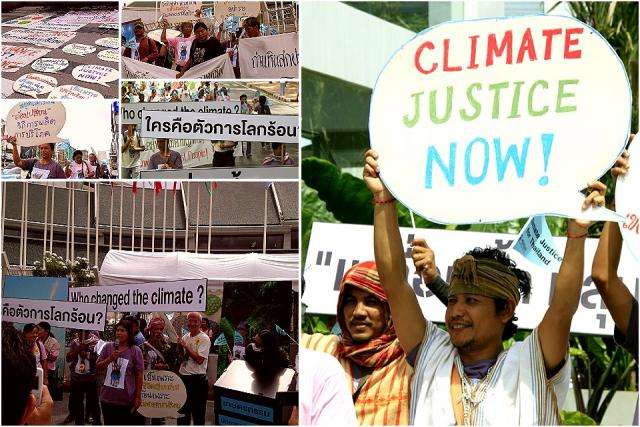The Thai government’s closing of 42 finance companies, in addition to the 16 it shut down in June, to convince the International Monetary Fund that it is finally serious about coming to grips with the country’s economic crisis, focused attention on a set of actors which many observers consider the prime villains in the country’s financial tragedy.
Previously considered the poor cousins of Thailand’s established commercial banks, finance companies have always had a controversial profile in the country’s financial structure. They were first set up in the late sixties and licensed to engage in financing housing, real estate development, cars and other consumer items, and exports. Not allowed to engage in retail banking, many finance companies resorted to questionable business practices to raise capital, including widespread speculation and manipulation of stock prices. In the early 1980s, lack of access to capital, fraud and mismanagement, and recession led to closure of many finance companies. From 127 companies in 1981, the number dropped to 105 by 1987, and further to 92 by the end of 1992.
But to many analysts during the early nineties, the ranks of finance companies needed to be pruned even further since many were teetering on insolvency and could only remain viable by merging with banks or other finance companies. The government, however, was spared from making painful decisions by Thailand’s achieving A+ credit ratings in international financial markets in the early 1990s.
Foreign Capital and the Finance Companies
To foreign banks and portfolio investors, Thailand’s average GDP growth rate of 10 per cent per annum, which appeared to be a long-term trend, served as the collateral for capital they were willing to either loan to Thai companies or invest in the stock market. Finance companies, finding raising money at home via promissory notes to the Thai public to be a bit too onerous, went overseas and found to their surprise that they could get lots of money on very good terms.
Indeed, as late as 1995, according to Asiamoney, “With the country’s positive outlook, competition to lend to Thai banks and finance companies has been intense. This has become even more pronounced with the recent migration of banks to the Asian market to chase the relatively few number of good credit risks, thus driving down the cost of funds. Not only are the margins narrowing; to win business, banks are reducing fees and extending their maturity dates.”
Government policies encouraged this trend of finance companies going offshore for cheap dollars then bringing them back for re-lending within the country. In 1993, with the establishment of the Bangkok International Banking Facility (BIBF), foreign banks were allowed to set up subsidiaries to lend dollars to onshore borrowers, meaning that the finance companies no longer had to go to Singapore, London, or New York to raise dollars from foreign banks. Also, the Bank of Thailand, the country’s central bank, kept local interest rates high–higher than comparable benchmarks like US interest rates–in order to suck in foreign capital. And both foreign creditors and finance company borrowers were insured from currency risk via the fixing of the value of the baht 25 to the dollar.
Financial Walpurgisnacht
The result was a financial walpurgisnacht, as finance companies went on a borrowing spree and foreign portfolio investors seeking quick and high returns bought shares in local finance companies, driving the Stock Exchange of Thailand index to record highs. In the process, working for a finance company came to be regarded as a fast track to the top that avoided the slow promotions, huge bureaucracies, and stodgy atmosphere of the big established banks. Not surprisingly, thousands of the country’s best educated and best trained professionals–Bangkok’s yuppie elite–flocked to the finance companies in the go-go atmosphere of the early nineties.
Taking advantage of enormous spreads between the low rates at which they borrowed from foreign financial institutions and high local interest rates, finance companies re-lent money to local enterprises and individuals, with the expectation of huge profits. Financing BMWs and other consumer durables was one of many activities that finance companies engaged in to service Bangkok’s new middle class. But real estate financing proved to be the finance companies’ favoured line of business; by 1996, it was estimated, conservatively, that property loans accounted for around 20 per cent of their portfolios.
By then, however, runaway construction had resulted in a glut of residential and commercial units, with the stock of vacant units in Bangkok coming to an estimated $20 billion. This situation translated into the developers’ growing inability to make interest payments to the finance companies, leading to the situation that touched off the financial crisis.
Playing Pretend
By the beginning of 1997, half of the loans made to property developers were “non-performing,” with the total value of these loans estimated at between $31 billion and $38 billion. But the finance companies and banks could not afford to declare their borrowers insolvent since their own financial standing could be seriously damaged by the acknowledgment that so many of their borrowers were technically bankrupt.
A game of pretend had, in fact, been going on since 1995 when the property glut started to become evident. Finance companies and banks did not press their borrowers too hard on regular debt servicing, instead employing creative accounting techniques to hide the latter’s actual financial status. In the meantime, they pressed the government to mount a financial rescue operation that would allow them to recoup a significant part, if not all, of their assets, calculating that the government would do anything to avoid a chain of bankruptcies destroying Thailand’s image as a good investment bet. The finance operators were placing their bets with Thai financial history on their side, for seldom in the past had the government ignored pleas for a rescue from troubled banks and financial institutions.
They were right. Early in 1997, the Bank of Thailand set up the Financial Institutions Development Fund (FIDF) to “inject liquidity” into the cash-strapped finance companies to assist them in restructuring their portfolios along more healthy lines. This was followed by the creation of the Property Loan Management Organisation (PMLO), which issued bonds to raise about $3.85 billion to buy collateralised property loans from the finance companies at “fair market value.” The PMLO then eased the terms of the loan for the real estate borrowers, allowing them, for example, a five-year grace period before they would have to start paying interest on the loans.
These and other mechanisms constituted a grand bailout for the finance companies, the finance companies’ foreign creditors, and property developers. As one account put it, the financial rescue effort shifted “the cost of bad investment decisions to Thailand’s taxpayers, who will guarantee the bonds, and to government and state enterprise employees, who will be forced to buy them through their pension funds.”
But, despite the large amounts involved, it was too little, too late, and, as events were to reveal, ill-advised in the first place.
Finance One: The Crisis in Microcosm
The crisis of Thailand’s financial sector is captured in microcosm by the saga of Finance One, which was, in the beginning of 1996, the premier finance company in the country.
Finance One was a company whose methods thrived in what one Bangkok news commentator described as a “bull market rewarding high revenue generators and disregarding risk in pursuing business.” The company not only engaged in traditional activities like financing real estate development and sales on instalment of pick-ups and other vehicles, but also invested large amounts of funds in stock market speculation, buying real estate, also for speculative purposes, and snapping-up troubled or smaller finance companies and securities firms.
This was classical empire-building, and indeed, Finance One’s chief, Pin Chappakak was given the sobriquet “merger king” by Thailand’s business community, which both admired and feared his ambition to become the country’s prime financial power. The fortysomething Pin, in fact, became a hero and role model for Bangkok’s financial yuppies, who saw boldness where more cautious observers saw recklessness.
To finance its imperial acquisitions and operations, Finance One borrowed heavily from foreign financial institutions, with its borrowings coming to $622 million by the end of 1996. Another key source was the stock market, where local and foreign investors snapped up Finance One shares, which traded at a high of 177 baht, or $7, apiece, in January 1996.
Most of the capital raised from foreign and local sources found their way to real estate financing, which accounted for about 30 per cent of its total loan portfolio of 65 billion baht or $2.5 billion. Most of these loans began to go sour, very quickly, in 1996, as the extent of the glut in housing began to hit home. In the first quarter of 1996, Finance One could still report a net profit of $6 million. By the first quarter of 1997, it reported a loss of $15 million. Unable to convert its other assets into cash to keep creditors at bay, the company lurched toward bankruptcy rather quickly. For the financial world, confirmation of Finance One’s parlous state came in March 1997, when one of its subsidiaries defaulted on a $13.5 million debt payment.
In a desperate effort to survive, Finance One head Pin tried to engineer a merger with the Thai Danu Bank even as it borrowed $1.6 million heavily from the government’s Financial Institutions Development Fund to bankroll the salaries of its employees. By that time, Finance One shares were down to a grey market price of 6 baht apiece, from 170 baht plus during the company’s heyday. But even that was too much for Thai Danu, which opted out of the proposed marriage in late May, concluding that Finance One, in fact, had a negative net worth.
End Game
On June 27, the government suspended the operations of Finance One along with 15 other finance companies. Despite pleas from academics and the public, however, the government refused to release statistics that would have clarified the depth of the crisis in the sector, such as precise figures on non-performing loans or clear indicators of the net worth of the different companies. Thus, it came as a great shock when the government announced the closing of an additional 42 companies on August 5, along with an admission that it had spent at least $16 billion trying to prop up faltering firms like Finance One.
But the rescue operation, the public slowly found out, had not only been futile; it had been grossly mismanaged and abused. On the lookout as usual for opportunities to turn a profit, stable firms joined troubled ones in knocking on the door of the FIDF for liquidity assistance, according to Nation writer Thanong Khantong. And many got what they wanted from a government that had very fuzzy criteria to distinguish viable from ailing firms.
When they did get assistance, a number of companies did not apply the funds to restructuring their portfolios on a sounder basis, as they were obligated to, but used it to try to turn a quick profit. As one observer told the Nation, “Back in March and April, when the financial crisis was taking shape, it was considered fun to make a profit this way…and it looked exactly like a ‘Chamoy’ pyramid game, because those who borrowed at 20 per cent then loaned it out at 22 per cent…Those who borrowed at 22 per cent then loaned it out at 24 or 25 per cent.”
Incorrigible to the end, Bangkok’s speculative yuppie sharpies got their come-uppance when, in order to convince the IMF that it was finally getting serious at straightening out the financial sector, the government included them in the list of companies to be shut down–precisely on the basis of their having queued up for assistance at the rescue fund. They had finally outsmarted even themselves.
*Dr. Walden Bello, a contributing editor to the Nation, is co-director of Focus on the Global South, a program of research, analysis, and action of the Chulalongkorn Social Research Institute (CUSRI). A professor of sociology and public administration at the University of the Philippines, he is the author of several books on East Asian development, including Dragons in Distress: Asia’s Miracle Economies in Crisis (London: Penguin, 1991).









